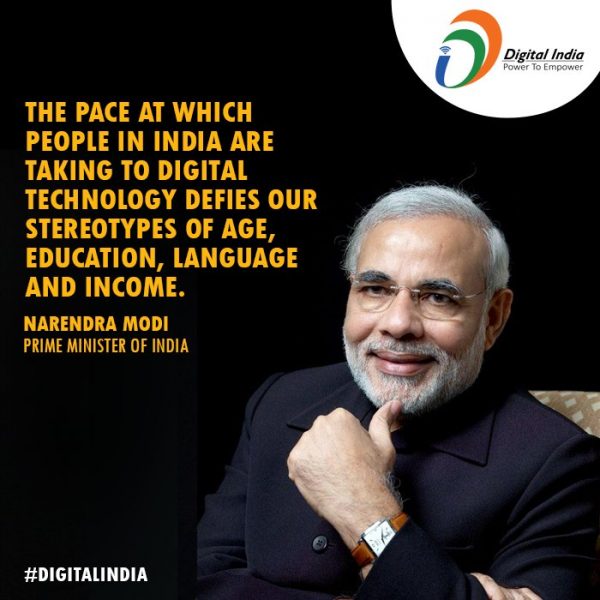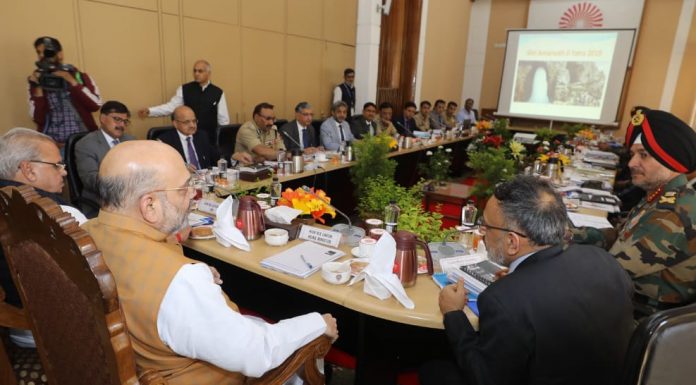
Digital India – Sowing the Seeds
Together with the mobile network, the launch of Internet for the Indian Public in 1995 laid the groundwork for Project Digital India initiated by Mr. Modi in 2015.
It is hard to believe, but the seeds for Digital India were sowed during the year 1995 in the communist ruled state of West Bengal by none other than Jyoti Basu, a dyed-in-the-wool comrade.
While the communists in the Soviet Union were shaken up in the 1980s by Gorbachev’s Glasnost and Perestroika, communism was still going on strong in West Bengal several years later with comrades hoping for “laal sawera aayega” – literal meaning “red morning will come”, symbolizing the dawn of the Utopian communist society that never materialized.
However, something miraculous happened in July 1995 – West Bengal Became the first state to successfully place the first phone call on a mobile network in India.
1995 was the year when India took its first step towards a connected future.
One more miracle happened in 1995 – the government owned telecom entity VSNL, managed to launch Internet for the Indian Public on August 15 1995. For the first time, the internet was finally available for the Indian public.
A history lesson: Inspired by Germany’s network of high speed roads, “Reichsautobahnen”, the US President Dwight Eisenhower signed the Federal-Aid Highway Act of 1956. This paved the way for a 41,000-mile “National System of Interstate and Defense Highways”. The construction of an elaborate expressway system was deemed “essential to the (US) national interest.” The progress that resulted in the USA with this connectivity is mind boggling.
India can learn a lot from this bit of history – replace “highway” with “high speed information superhighway” and that is its chance to move from the rank of developing to a developed nation.

Not withstanding the core governing framework of India that is based on the 19th century Imperial Civil Service (legacy of the British colonial times), there is something to be said about the entrepreneurial spirit in the country. Dozens of options for mobile providers, extremely low rates for phone calls and coverage in most of the country. All these are examples of people overcoming red tapism and making it happen.
Key Wins:
- Broadband adoption (4MBPS) has doubled in 2016 compared to 2015 – good results, but pace needs to increase. also, note the challenge with speed below.
- Launch of ORS Patient Portal http://ors.gov.in- Online system for hospital appointments, lab reports and blood availability. Penetration does seems to be limited to major cities based publicly available stats.
- “e-Kranti” (National eGovernance Plan 2.0) – Several services now offered online, including vehicle registration, National ID, Passport and Visa services.
- Agri e-commerce services – “Krishidoot” – On track to make lives for small farmers better. Already resulting in increase in their net income by providing them with real-time market information
- There is at least a plan on paper with some KPIs on the progress – needs improvement in ensuring information is presented clearly and transparently.
Also read: Mukesh Ambani’s Reliance Jio Digital India
Digital India – Key Challenges
In ‘Digital India,’ a 15-Minute Wait for Email [Wall Street Journal report]

- Average Connection speed ranks at the bottom of the heap globally. The government must address this as a high priority.
- While average connection speeds have increased, India’s global rank is very poor at #114, for this metric. South Korea is #1 with average connection speed of 29Mbps, compared to India’s 3.5Mbps. [Source: Akamai’s State of the Internet Q1 2016 report]
- The government claims that “Broadband for All” and National Optical Fibre Network (NOFN) for rural areas will be implemented “soon”. However, the details are lacking.
- Current infrastructure cannot support a population of over 1 BILLION people, especially sustained high speeds at peak times.
- Transparency and information dissemination hampered by several amateurish websites with lots of content but little information:
- http://www.digitalindia.gov.in/, http://digitalindiaoutreach.in/ and several other sites are cluttered with several pages and graphics but navigation is hard and finding the right information difficult.
- Penetration needs to improve dramatically to reap full benefits. Several services have taken off only in major metros and full country-wide adoption will be critical to success.

Without a high speed network, Digital India will fail. Double down on this investment, accelerate the implementation and tone down the self-congratulatory messages. Treat this initiative on par with national security.
- Blanket India with a high speed network that can deliver sustained high speed bandwidth for hundreds of millions of people simultaneously. In other words, build an extremely wide information superhighway that just does not choke.
- Set audacious goals with aggressive timelines for broadband penetration. This is a major challenge and unlikely to be accomplished by any one provider. Hence, along-with the “traditional” towers and fiber optic networks, projects like Google’s Project Loon and Facebook’s Internet Drones, all need to be on the table.
- One child, one mobile device and unlimited bandwidth – Invest in ensuring every child gets a mobile device and unlimited bandwidth. Create digital savvy citizens from a young age.
- Improve information dissemination and clean up the websites. Create one gateway portal with clear directions and links to all services.
- Hire experts in user experience and revamp the interface. Focus on ease of use and optimize for speed.
In Closing
Project Digital India is certainly a reality and Mr. Modi is to be given the credit for the initiative and mobile First strategy. Progress has been made, albeit the pace needs to accelerate a lot. Program management needs to be tightened up with independent auditors monitoring the progress. There needs to be the same sense of urgency as John F. Kennedy’s 1961 commitment to land a man on the moon and return him safely to the earth.
“A moment comes, which comes but rarely in history, when we step out from the old to new, when an age ends. When the soul of a nation, long suppressed, finds utterance.” [Jawaharlal Nehru, India’s first prime minister in his Tryst with Destiny speech on 15 August 1947 when India became independent]
Digital India is the country’s chance to step out from the old to the new and begin a new age.
~ News4masses is now also on Google news
~ If you want to contribute an article / story, please get in touch at: news4masses[at]gmail[dot]com





















